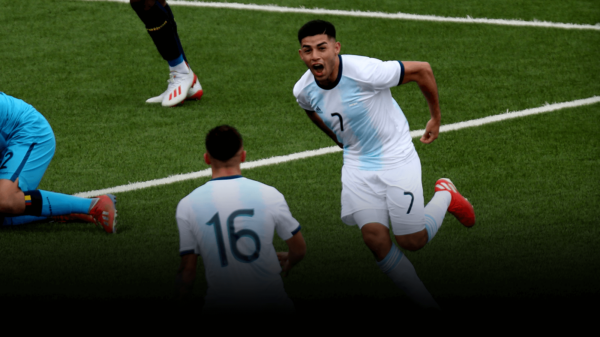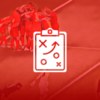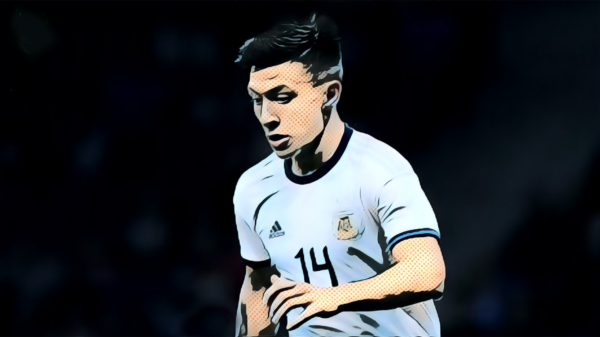As we enter the latter stages of the World Cup and into what will turn out to be some of the most historic games of the tournament, we will statistically analyse some of the key players of each team based on the systems employed & opposition using Squawka‘s excellent comparison matrix.
Comparing the attacking heads
Coming into the tournament, a lot of people were looking at Argentina as potential winners. The incredible attack that they boasted was the key, and led by one of the best players in the world, Argentina were touted as a deadly cocktail of speed and skill. Of all the various resources talked about, it’s been only Lionel Messi who has really fired, carrying his team into the quarter finals. He, no doubt, is going to be the main attacking outlet for Argentina. Against him, we have Kevin De Bruyne. The player had a bit of a strange season at club level, sitting on the bench during the first half of the campaign at Chelsea, but a transfer in January really resurrected his form. De Bruyne has been a key performer for the Belgians in this tournament. His performance in the last round against the USA almost single handedly ensuring that the Belgians are here in the quarter finals, to take on Argentina. Both teams are going to be looking to these players for creativity and that attacking edge. While Argentina are heavily dependent on Messi for their attacking output, Belgium have De Bruyne, who takes up the role of the playmaker, and directs the attack. It’s crucial to the two teams chances that these players fire.
It’s clear to see from the above graphic that while they are the two main attacking avenues for their teams, they play in slightly differing roles. While Messi plays a little higher up the pitch, looking to find the back of the net as often as possible, De Bruyne is the player who is a little deeper, trying to set up his team-mates to score the goals.
Messi, focused on the goal-scoring aspects, has done a fine job, scoring 4 goals in his 4 games for an average of a goal a game, whereas the same stat for De Bruyne is lower, at 0.33. In terms of shots as well, Messi is well ahead of De Bruyne, with his 4 trumping the 2.67 the Belgium has taken per game quite easily.
However, the tables are turned when it comes of passing the ball. De Bruyne, tasked with the job of creating, has more assists, more forward passes, and a better pass completion rate. Again, this can be put down to the fact that their positioning on the pitch is different, with Messi playing much closer to the opposition goal.
Battle of the left backs
Marcos Rojo, the 24 year old full back from Argentina, currently plays at Sporting CP, but some of his performances at this World Cup have seen him linked to clubs across Europe. He has done well in the opportunities he’s had so far, and been impressive. He even managed to get a goal, but his main job will be to defend well, and provide the support his attackers need from him. Vertonghen, who is really a centre back, had a very mixed second season at club level, but has had a fairly solid World Cup. His poor foul conceded a penalty in the opener for Belgium, but in general, one cannot take away credit from him for Belgium’s excellent defending. While most full backs these days are worried about their attacking duties, and freedom going forward, both of these left backs are going to have to focus on doing their defensive jobs right. They will be up against players like Hazard and Messi, and so, any mistake on their part could prove to be fatal for their side’s World Cup hopes.
With the Argentines enjoying domination in almost all their games, it was only inevitable that the stats, especially the attacking ones, would be in favour of Rojo. The Argentine has more successful take ons, forward passes, backward passes, and chances created. While facing teams who have sat back and looked to play on the break against them, they have had to rely on the likes of Rojo to provide the right kind of support to the attack. With forwards being marked tightly, the likes of Rojo have rose to the occasion, with some sterling performances.
Defensively though, Vertonghen has been far more assured when he has had to defend. An average of 3 interceptions per game speaks volumes of his intelligence in positioning himself, and snuffing out danger from the opposition attacks. Rojo, on the other hand, averages 3 tackles a game, which shows that the midfield in front of him haven’t really been able to stop the counters that the opposition throw at his side. This could be important, because we could see the same pattern of game as far as Argentina are concerned, and they really dont want to give the likes of Hazard the chance to run at defenders.
Winning the midfield battle
As mentioned above, the midfield battle will be crucial. Belgium dont want to give the Argentine players the time and the space to be able to dictate play and get the ball to their menacing forward line, and Argentina have to be careful to not leave their defence too exposed. The 2 men that will take charge of this area of the game are Axel Witsel, and Javier Mascherano.
The latter, who plays for Zenit, has been quite a revelation this World Cup. He’s had a good tounrament, and Wilmots’ brains on the pitch are going to be the key to keep his side organised, and defending as a unit against the dangerous Argentine attacking force.
Mascherano, who is obviously a bit more experienced at this level, generally plays centre back at club level, but if anything, this will help him gain a fresh perspective on what’s needed of him.
Defensively, Mascherano has had a lot more to do than Witsel. As mentioned in the previous point, with the Argentine team looking to attack at every given opportunity, teams have had a lot of joy on the break. This has necessitated an aggressive approach from their defensive players, who need to make tackles in order to stop opposition players in too much space. Mascherano averages an incredible 4.5 tackles a game, which dwarfs the figure that Witsel can boast of. He also makes more fouls, which is certainly a direct consequence of his tackling behaviour.
Going forward as well, the Barcelona man is well ahead of his Zenit counterpart. With Argentina enjoying a lot of possession, Mascherano has had to take up the attacking role as well. He averages an excellent 71.5 forward passes a game, which is very impressive. This has also led to a few more chances created by him. With Belgium looking at counter attacks to score, Mascherano might again be required to set up a few chances for his side.
Thank you for reading. You can share this article through one of the buttons below. Do let us know your thoughts in the comments box below.
- Analysis: Are Chelsea’s pressing issues a concern? - October 5, 2020
- Has Financial Fair Play Been Worth It? - August 27, 2020
- Tactical Philosophy: Frank Lampard - May 20, 2020





























































